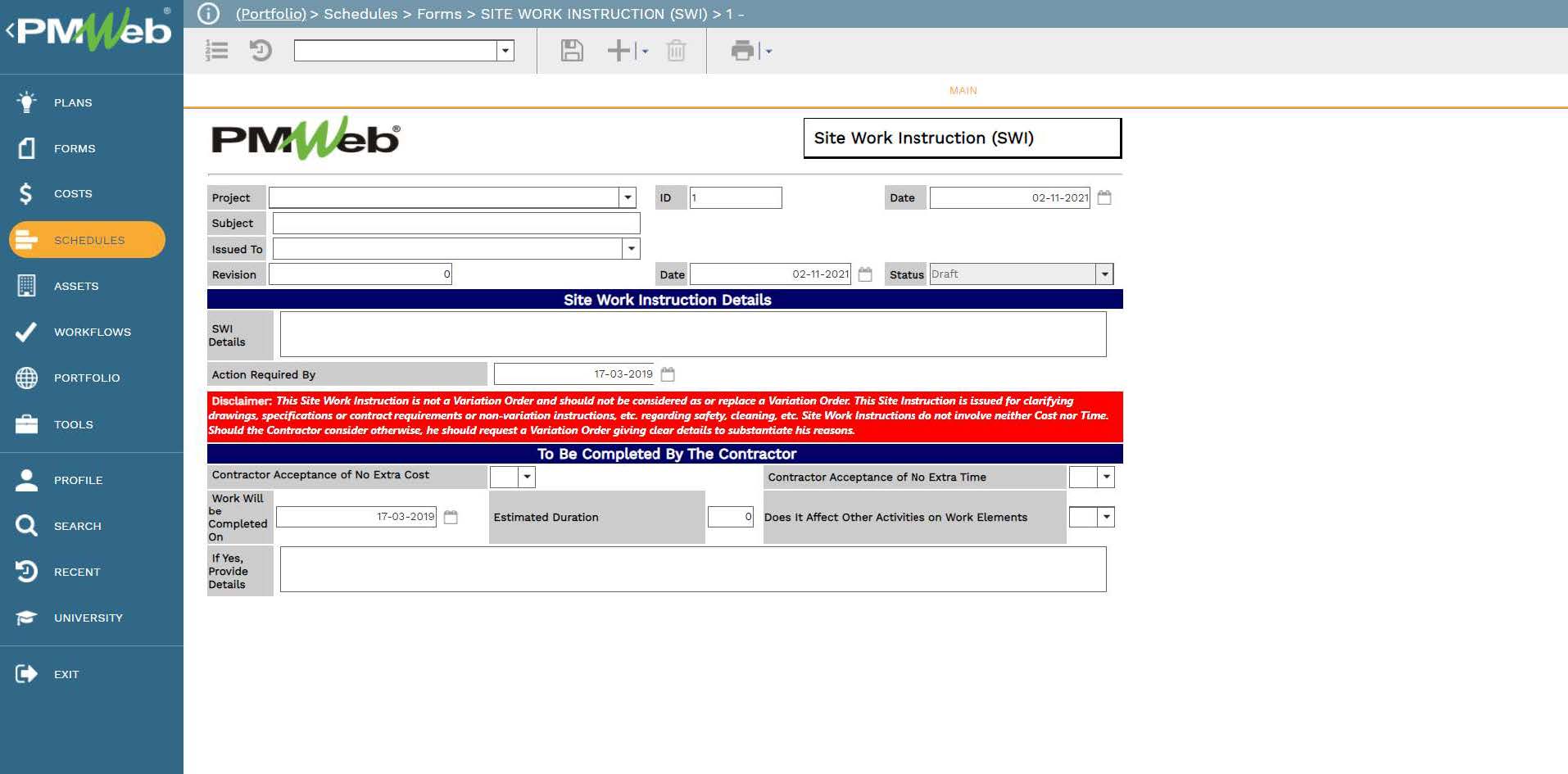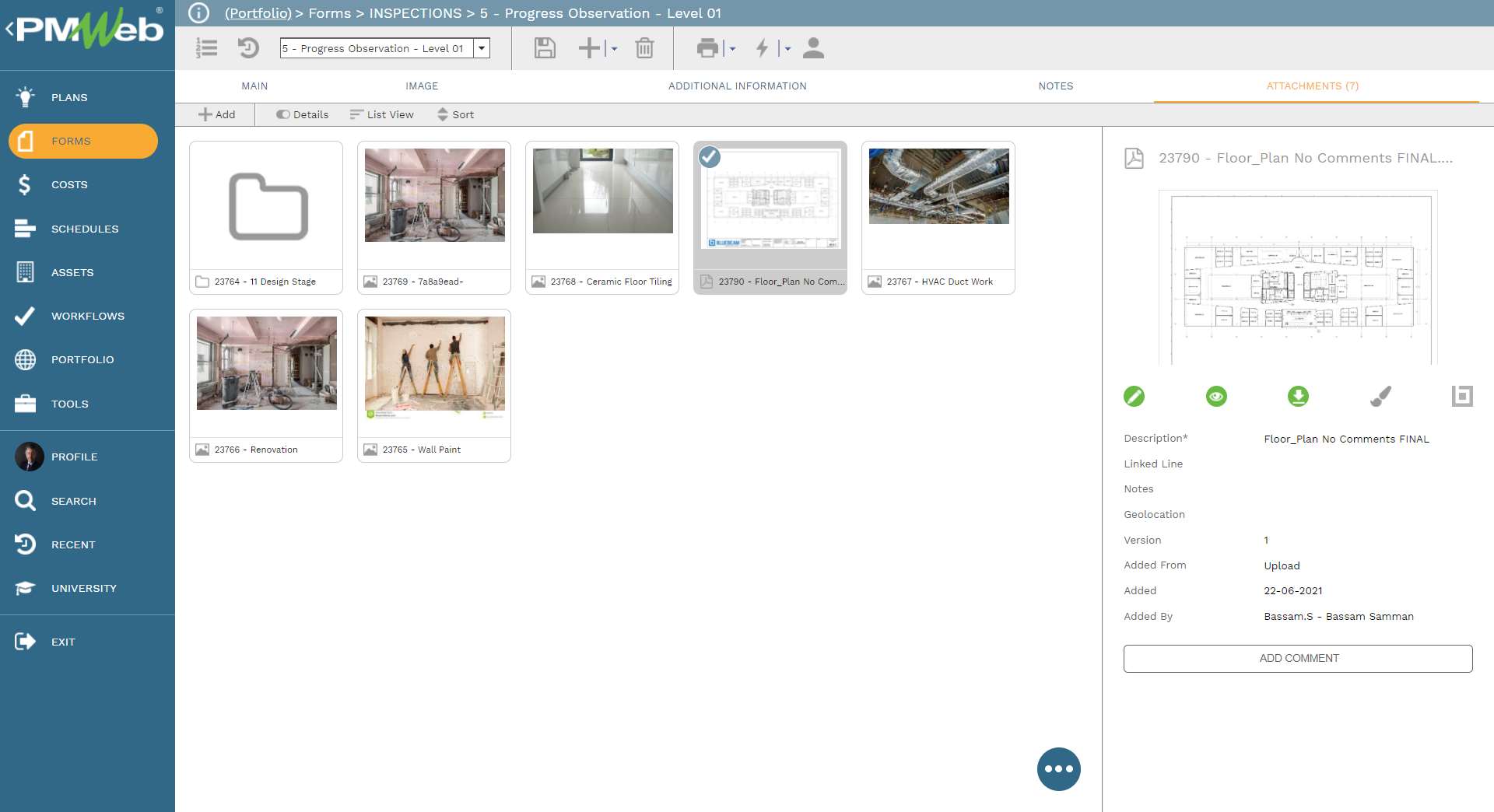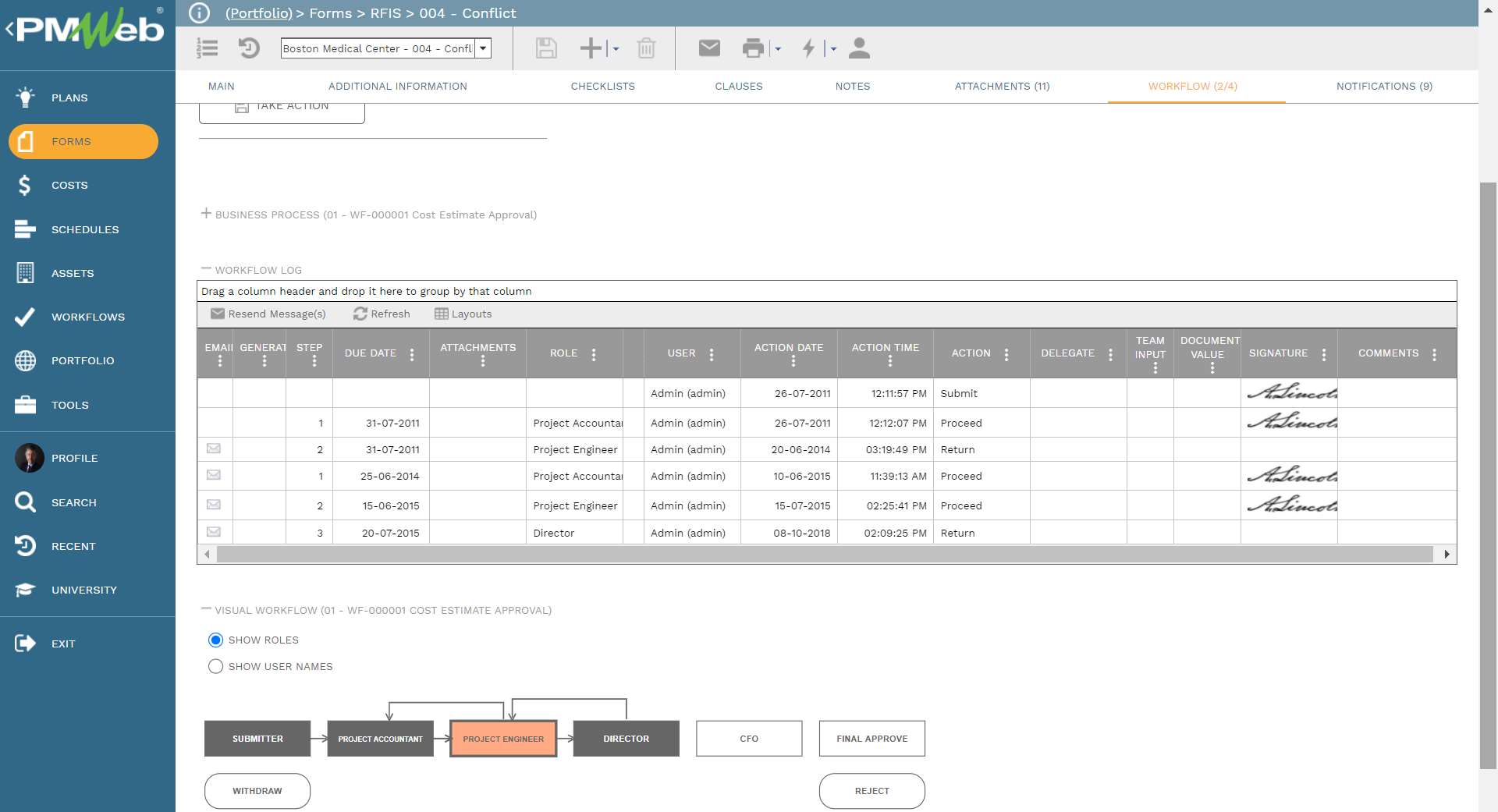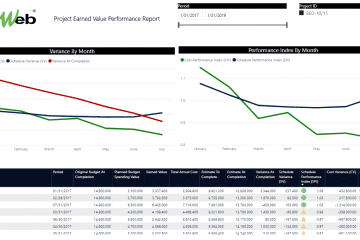Site Work Instructions (SWI) are written technical instructions issued to the contractor by the engineering consultant to execute a particular job or work, which does not involve adjustment of the contract sum or time. All SWIs must be copied to the project owner or the project management consultant upon issuing to the contractor. The process for who should be involved and copied on the SWI should be outlined in the project execution plan (PEP). On some projects, SWI is also known as Field Orders.
Upon receipt of the SWI, the contractor evaluates the received instruction and advises the engineering consultant, with a copy to the project owner or the project management consultant, of the acceptance to carry out the work as outlined in the SWI without additional time or cost, when to commence the work and its duration for completion and whether it has any effect on other activities or work elements. Should the contractor consider that a change in the contract sum or contract time is required, then the contractor must submit a change order request to the project owner or his authorized representative immediately and before proceeding with the Site Work Instruction works.
The Site Work Instruction form must have the following disclaimer statement: “This Site Work Instruction is not a Variation Order and should not be considered as or replace a Variation Order. This Site Instruction is issued for clarifying drawings, specifications, or contract requirements and non-variation instructions, etc. regarding safety, cleaning, etc. Site Work Instructions involve neither Cost nor Time. Should the Contractor consider otherwise, he should request a Variation Order giving clear details to substantiate his reasons.”.
Using project management information systems (PMIS) like PMWeb a formal process for managing, monitoring, and tracking Site Work Instructions can be enforced. PMWeb custom form builder allows the creation of the SWI capturing the different fields needed to manage the SWI process. Those include the SWI description, needed date, confirmation by the contractor that the SWI will be completed without additional time or cost, when to commence the SWI work and its duration and whether it has any effect on other activities or work elements, and the description of this effect if any.

The Site Work Instructions form attachment tab allows uploading and attaching any documents or pictures that could be relevant to the SWI. Those documents and pictures stay stored in the PMWeb document management repository. In addition, links to other PMWeb records and imported MS Outlook emails can also be added.

The Site Work Instructions (SWI) workflow details the steps of issuing and responding to the SWI, as well as the details of those who need to be copied on the SWI. Those include the project owner or the project management consultant. The workflow steps align with the access given to complete the different fields of the SWI. For example, the contractor only receives access to the fields within the section titled “To Be Completed By The Contractor”.

The Site Work Instructions (SWI) register reports on the details of all issued SWIs and their status. The report includes a table of SWIs issued on the project along with the details. The report includes visuals to summarize SWI by bid package, status, if it has cost impact if it has time impact, and if it impacts any other activity or works on the project. The report data can be specific for a single project or all projects using the project filter as well as it can be for bid packages within a project or all bid packages by using the bid packages filter.




